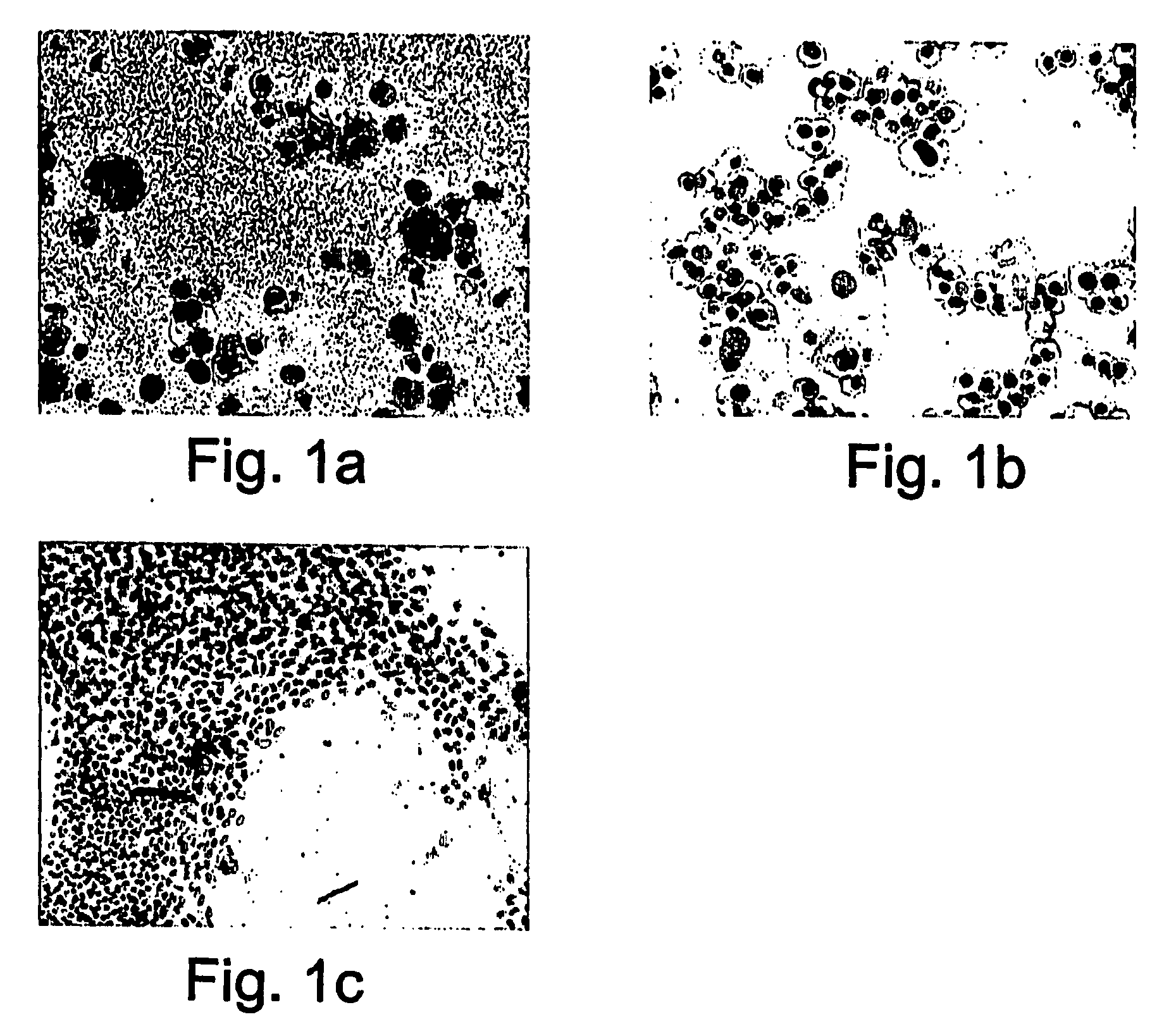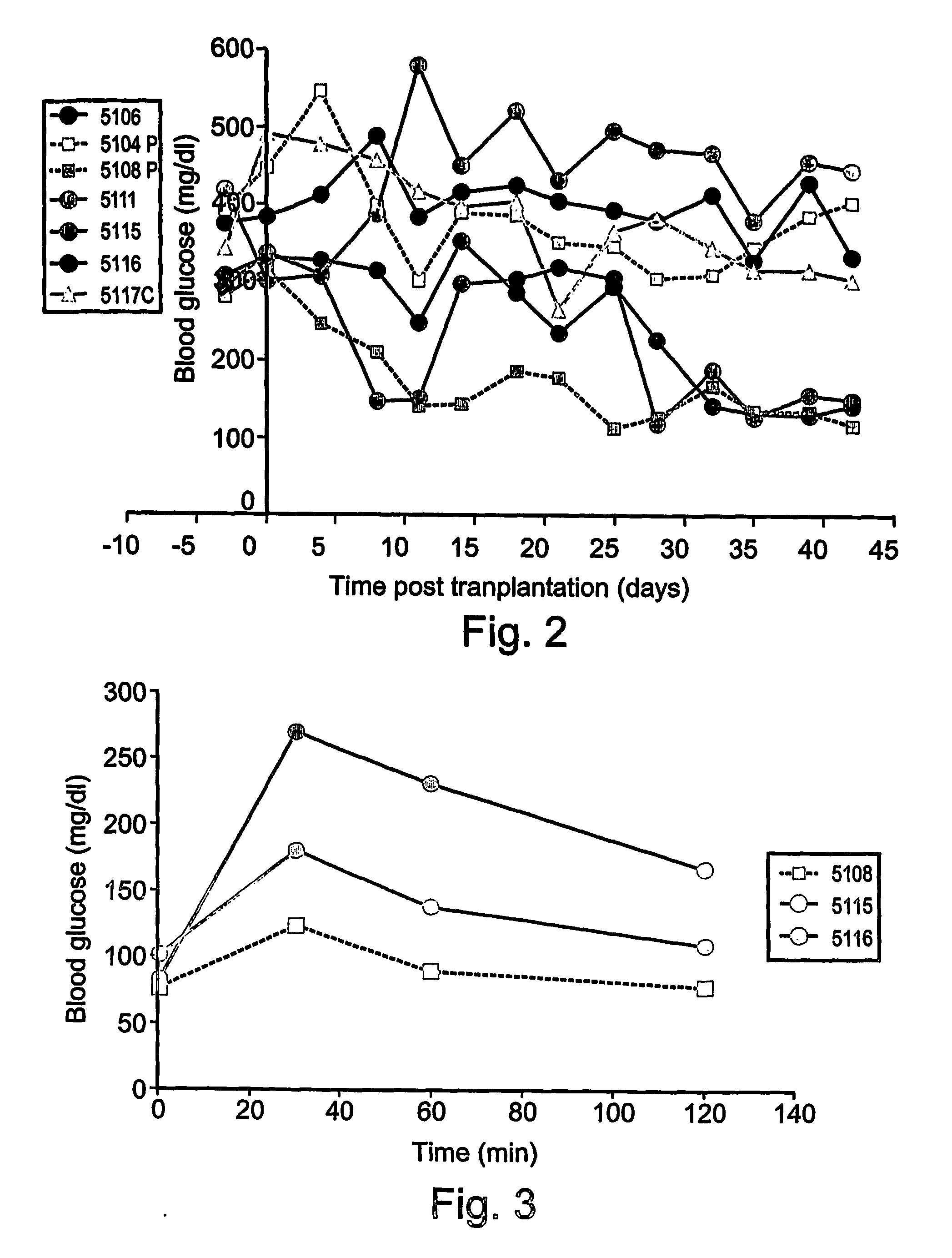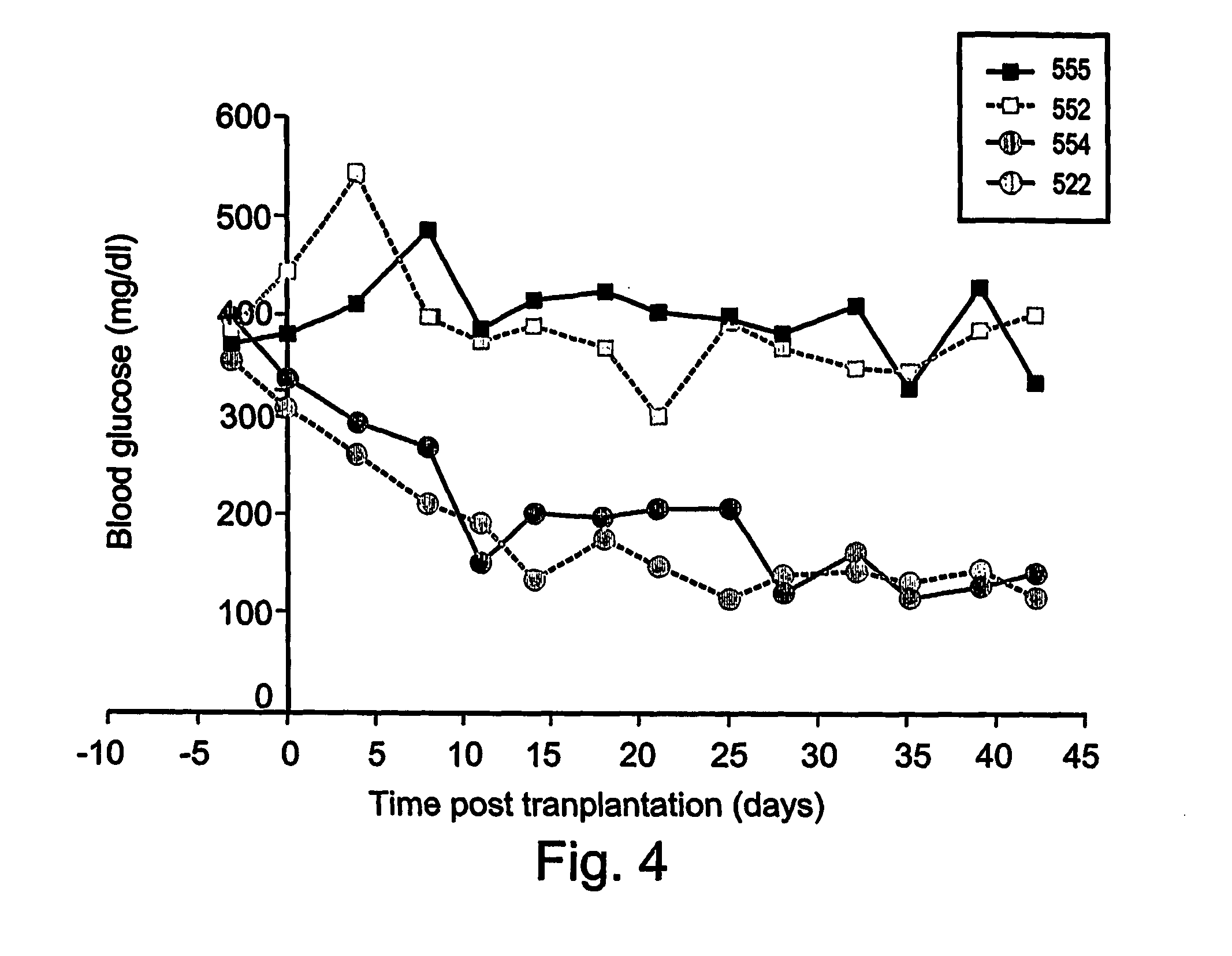Ex vivo progenitor and stem cell expansion for use in the treatment of disease of endodermally-derived organs
a technology of stem cell expansion and ex vivo progenitor, which is applied in the field of ex vivo progenitor and stem cell expansion for use in the treatment of endodermally-derived organ disease, which can solve the problems of liver failure, liver failure, liver failure, and serious consequences for the nervous, skeletal, endocrine and circulatory systems
- Summary
- Abstract
- Description
- Claims
- Application Information
AI Technical Summary
Benefits of technology
Problems solved by technology
Method used
Image
Examples
examples
[0453] Reference is now made to the following examples, which together with the above descriptions illustrate the invention in a non-limiting fashion.
[0454] Generally, the nomenclature used herein and the laboratory procedures utilized in the present invention include molecular, biochemical, microbiological and recombinant DNA techniques. Such techniques are thoroughly explained in the literature. See, for example, “Molecular Cloning: A laboratory Manual” Sambrook et al., (1989); “Current Protocols in Molecular Biology” Volumes I-III Ausubel, R. M., ed. (1994); Ausubel et al., “Current Protocols in Molecular Biology”, John Wiley and Sons, Baltimore, Md. (1989); Perbal, “A Practical Guide to Molecular Cloning”, John Wiley & Sons, New York (1988); Watson et al., “Recombinant DNA”, Scientific American Books, New York; Birren et al. (eds) “Genome Analysis: A Laboratory Manual Series”, Vols. 1-4, Cold Spring Harbor Laboratory Press, New York (1998); methodologies as set forth in U.S. Pa...
example i
Expansion of Hepatic Stem Cells from Primary Adult Mouse Hepatocyte Culture with TEPA and Retinoic Acid Antagonist AGN 194310
[0479] Hepatocytes characteristically grow poorly in culture, with high incidence of cell death. Further, the fraction of hepatic stem cells, known as oval cells, in mature liver is normally very small, increasing usually in response to injury. In order to determine whether hepatic-derived stem cells could be expanded by methods similar to those used for expansion of hematopoietic stem cells, hepatocytes from adult mouse livers, freshly prepared in primary culture, were exposed to the heavy metal chelator tetraethylenepentamine (TEPA, 10 μM) or the retinoic acid agonist AGN 194310 (FIG. 1). Whereas the control cultures treated with culture medium and growth factors EGF and HGF only contained fully matured bi-nucleated hepatocytes (FIG. 1A) that ceased proliferation after a few passages, exposure to TEPA or AGN 194310 clearly induced growth of the cultured hep...
example ii
Reconstitution of Pancreatic Function in STZ Diabetic Mice by Transplantation of Ex-Vivo Expanded Cord Blood-Derived Stem Cells
[0481] In order to determine the efficacy of transplantation of expanded, non-endodermally derived stem or progenitor cells for repopulation of injured endodermal organs and restoration of function therein, human Umbilical Cord Blood cells were expanded ex-vivo with TEPA and transplanted, by direct injection into the pancreas, in STZ-diabetic SCID mice.
[0482] As is shown in FIG. 2, euglycemia was completely restored in one mouse (5108P), and partially restored in another mouse (5104P) receiving ex-vivo expanded CD133+ cells. Of the four mice receiving cells from the unselected TNC fraction of the ex-vivo expanded cultures two had completely restored euglycemia (5115 and 5116).
[0483] Insulin secretion in transplanted STZ diabetic mice was monitored by determining levels of C-peptide, indicative of the maturation of the insulin molecule in the pancreatic is...
PUM
 Login to View More
Login to View More Abstract
Description
Claims
Application Information
 Login to View More
Login to View More - R&D
- Intellectual Property
- Life Sciences
- Materials
- Tech Scout
- Unparalleled Data Quality
- Higher Quality Content
- 60% Fewer Hallucinations
Browse by: Latest US Patents, China's latest patents, Technical Efficacy Thesaurus, Application Domain, Technology Topic, Popular Technical Reports.
© 2025 PatSnap. All rights reserved.Legal|Privacy policy|Modern Slavery Act Transparency Statement|Sitemap|About US| Contact US: help@patsnap.com



